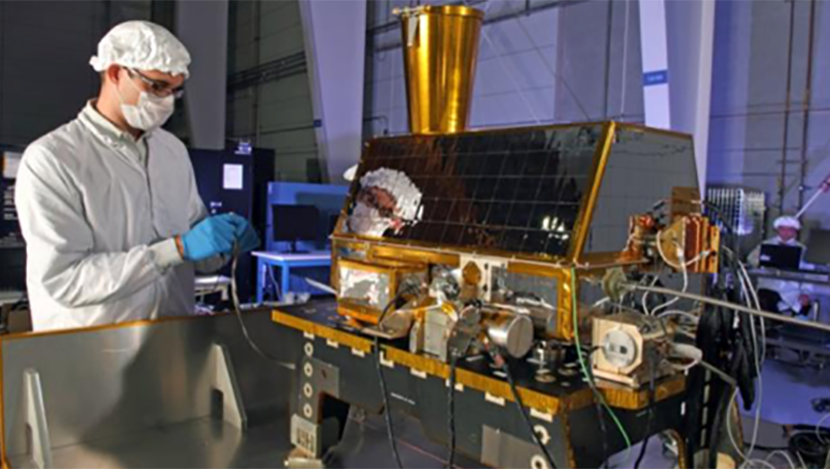Current threats require the ability to quickly detect short or long range launches from anywhere in the region, at any time, and with high confidence.
As the Australian Army Research Centre’s Director of War Studies Albert Palazzo recently wrote, Australia is currently building what will be the most powerful and capable force that the nation has ever fielded, including a new fleet of nuclear-powered submarines as part of the AUKUS trilateral security partnership. However, as Palazzo notes, what’s missing is “a broad investment in defensive infrastructure to protect this essential capability upgrade from an adversary’s attack. …. little thought has been given to protecting those assets from an enemy, particularly one with long-range missiles that could negate the ADF’s powerful weapons.”
For Australia, the missile threat of both a long-range strike and short-range missiles launched from naval vessels or aircraft means that the area of coverage is much wider than most other nations. Current threats require the ability to quickly detect short or long range launches from anywhere in the region, at any time, and with high confidence. It also requires the ability to generate low-latency tracks, or cues, which can be passed directly to defensive radars and anti-missile units.
During the Reagan administration, the US began development of defensive missile interceptor systems and currently has multiple systems in operational use. However, the United States’ current Space-Based Infrared System (SBIRS) Early Warning System (SEWS) used to share valuable missile warning messages with allies, does not meet Australia’s low-latency need to respond to threats with shorter timelines. As a result, there is a real and urgent need for Australia to implement its own regional Missile Warning (MW) system.
An affordable, regional MW system can provide persistent overhead coverage with excellent tracking performance needed for short-range threats, and multiple systems can provide coverage overlap for longer range threats. A regional MW system delivers low-latency cues while the threat is still in boost or early glide phase and beyond line of sight of the ground-based radars. This is critical for short-burning threats such as hypersonics, and close-range and short-range ballistic missiles. Without a cue, interceptor radars must operate in search mode which decreases their range (less energy on target) resulting in short engagement timelines and wasted resources (multiple interceptors launched per incoming target to maximize a successful intercept). Alternatively, an early cue enables ground radars to utilize their long-range track mode, which increases their ability to generate a fire control solution and engage targets earlier, which allows for more efficient intercept strategies such as shoot-look-shoot.
A regional MW mission operated from Geosynchronous Earth Orbit (GEO) could use up to four satellites that simplifies command and control. Options exist for low-cost GEO solutions either dedicated or hosted. Lower altitude solutions such as Medium Earth Orbit (MEO) or Low Earth Orbit (LEO) would increase sensitivity and geolocation accuracy but require larger constellations making these options more costly to build and complex to operate for a single regional Missile Defence system.
Leidos has pioneered affordable MW payload approaches and missions for the U.S. military. In 2011, Leidos was the first defence contractor to fly a Wide Field of View (WFOV) Overhear Persistent Infrared (OPIR) sensor in space on the Commercially Hosted Infrared Program (CHIRP). On this program CHRIP became the first military defence payload to fly on a commercial satellite as a rideshare. Leidos will also be the first to fly a new generation of a WFOV OPIR payloads ready for launch as early as 2022. The Leidos WFOV OPIR sensor is a first step toward a proliferated heterogeneous constellation of space vehicles that will ultimately provide persistent global coverage and sovereign capability. The WFOV OPIR payloads provide missile warning and tracking information to national defence authorities and cueing data for missile defence elements. This program is an integral part of the US Defense Department’s overall infrared strategy to detect, track, and defeat advanced missile threats.
The benefits of a regional WFOV OPIR MW capability extends to civilian purposes as well. Overhead, persistent and staring MW sensors can simultaneously identify remote bushfires while they are still small. For example, a crowning high intensity forest fire can be detected while it is less than an acre in size. In 2013, the US Forest Service teamed with US Department of Defense to demonstrate the effectiveness of OPIR sensors to detect bushfires in California. During the course of a week in which 14 fires started, Leidos’ CHIRP detected them all, and in 13 of the 14 cases did so before other detection systems.
It is in the best interest of both the United States and Australia to be able to perform and share MW missions and systems. The US has placed a high priority on forming stronger partnerships with its key allies for just this purpose. This partnership extends to access to affordable, commercial WFOV OPIR systems, like Leidos’ CHIRP, that leverage the U.S. recent investments in new MW systems.
Australia can benefit from this capability by investing in its own regional MW systems. The Australian 2020 Defence Strategic Update stated, “The prospect of high-intensity conflict in the Indo-Pacific, while still unlikely, is now less remote. The ADF must be better prepared for such conflict if deterrence measures fail, or to support the United States and other partners where Australia’s national interests are engaged.”
From fighting bushfires to increasing its Missile Defence systems ability to respond to hypersonic missiles, a regional MW system will create an effective Australian defence against these present and evolving threats.
Maj Gen Thomas Taverney, USAF (Ret.)
Senior Vice President, Space Payloads, Leidos
 Login
Login






